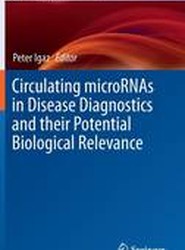(To see other currencies, click on price)
MORE ABOUT THIS BOOK
Main description:
Carbonic anhydrase (CA) is a seemingly ubiquitous enzyme of profound physiological importance, which plays essential roles in respiration, acid-base homeostasis, bone resorption, calcification, photosynthesis, several biosynthetic pathways and a variety of processes involving ion, gas and fluid transfer. This enzyme, which is present in at least three gene families (a, ss, ?), has found favour as a model for the study of evolution of gene families and for site-directed mutagenesis in structure/function relationships, for protein folding and for transgenic and gene target studies. Since the early use of CA inhibitors as diuretics and in treating congestive heart failure, the enzyme has been target of considerable clinical attention. Much of this is now focused on endeavours to produce a new generation of such drugs for the effective treatment of glaucoma and other potential applications. Recent data, suggesting links between CA and various disease processes, including cancer, have stimulated further...
Contents:
Exordium: Remarks on the discovery of carbonic anhydrase.- to the carbonic anhydrases.- Evolution and distribution of the carbonic anhydrase gene families.- An overview of the distribution and function of carbonic anhydrase isozymes in mammals.- The membrane carbonic anhydrases: from CO2transport to tumour markers.- Carbonic anhydrase (CA)-related proteins (CA-RPs), and transmembrane proteins with CA or CA-RP domains.- Regulation of the CA 1, CA 2 and CA 3 genes.- Use of carbonic anhydrase II-deficient mice in uncovering the cellular location of membrane-associated isoforms.- X-ray crystallographic studies of mammalian carbonic anhydrase isozymes.- The catalytic mechanism of mammalian carbonic anhydrases.- Activation of carbonic anhydrase isozymes.- Active-site engineering of carbonic anhydrase and its application to biosensors.- Folding and stability of human carbonic anhydrase II.- Membrane transport and provision of substrates for carbonic anhydrase in vertebrates.- Respiratory and renal roles of carbonic anhydrase in gas exchange and acid-base regulation.- The roles of carbonic anhydrase in metabolism, cell growth and cancer in animals.- The roles of carbonic anhydrase in gustation, olefaction and chemical irritation.- Carbonic anhydrases in striated muscle.- Inherited deficiencies and activity variants of the mammalian carbonic anhydrases.- Carbonic anhydrase inhibition in ophthalmology: Carbonic anhydrase in cornea, lens, retina and lacrimal gland.- Carbonic anhydrase inhibition in ophthalmology: Aqueous humour secretion and development of sulphonamide inhibitors.- The design of new carbonic anhydrase inhibitors.- Roles of carbonic anhydrases in the alimentary tract.- Carbonic anhydrases in the nervous system.- Carbonic anhydrases in calcified tissues.- Carbonic anhydrases of higher plants: an overview.- Plant carbonic anhydrases: structure and mechanism.- Algal carbonic anhydrase.- Bacterial carbonic anhydrases.- Keeping pace with a fast enzyme: steps and missteps.- Carbonic anhydrase research: A clinical perspective, past and future.
PRODUCT DETAILS
Publisher: Springer (Birkhauser Verlag AG)
Publication date: November, 2012
Pages: 619
Weight: 967g
Availability: Available
Subcategories: Biochemistry, Physiology
From the same series



































